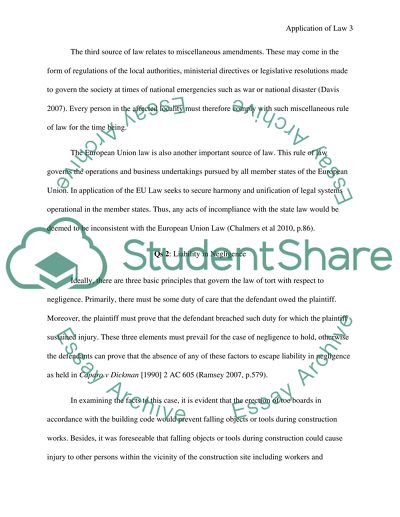Cite this document
(“You are advising Careless Contractors Ltd and its directors. The Essay”, n.d.)
You are advising Careless Contractors Ltd and its directors. The Essay. Retrieved from https://studentshare.org/law/1613086-you-are-advising-careless-contractors-ltd-and-its-directors-the-directors-are-new-to-construction-and-have-asked-you-to-advise-them-about-their-following-concerns-1-the-directors-are-anxious-to-comply-with-the-law-explain-the-sources-of-law-to-them-in
You are advising Careless Contractors Ltd and its directors. The Essay. Retrieved from https://studentshare.org/law/1613086-you-are-advising-careless-contractors-ltd-and-its-directors-the-directors-are-new-to-construction-and-have-asked-you-to-advise-them-about-their-following-concerns-1-the-directors-are-anxious-to-comply-with-the-law-explain-the-sources-of-law-to-them-in
(You Are Advising Careless Contractors Ltd and Its Directors. The Essay)
You Are Advising Careless Contractors Ltd and Its Directors. The Essay. https://studentshare.org/law/1613086-you-are-advising-careless-contractors-ltd-and-its-directors-the-directors-are-new-to-construction-and-have-asked-you-to-advise-them-about-their-following-concerns-1-the-directors-are-anxious-to-comply-with-the-law-explain-the-sources-of-law-to-them-in.
You Are Advising Careless Contractors Ltd and Its Directors. The Essay. https://studentshare.org/law/1613086-you-are-advising-careless-contractors-ltd-and-its-directors-the-directors-are-new-to-construction-and-have-asked-you-to-advise-them-about-their-following-concerns-1-the-directors-are-anxious-to-comply-with-the-law-explain-the-sources-of-law-to-them-in.
“You Are Advising Careless Contractors Ltd and Its Directors. The Essay”, n.d. https://studentshare.org/law/1613086-you-are-advising-careless-contractors-ltd-and-its-directors-the-directors-are-new-to-construction-and-have-asked-you-to-advise-them-about-their-following-concerns-1-the-directors-are-anxious-to-comply-with-the-law-explain-the-sources-of-law-to-them-in.


